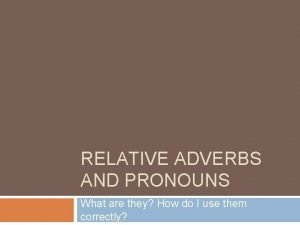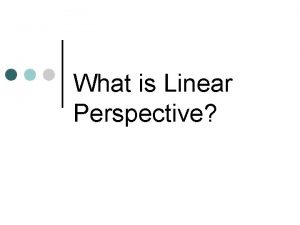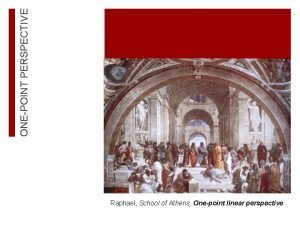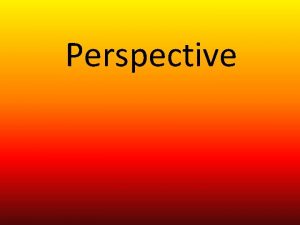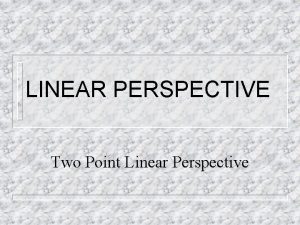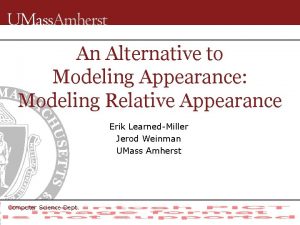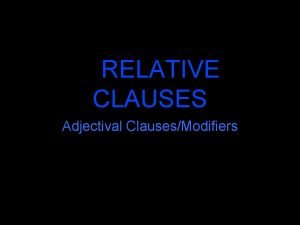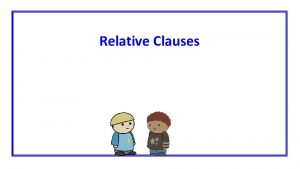Linear Perspective the appearance of things relative to











- Slides: 11

Linear Perspective the appearance of things relative to one another as determined by their distance from the viewer

Linear Perspective is based on the concept that all lines meet at what is called a “Vanishing Point” on the “Horizon Line”. As objects become closer to the vanishing point, they become smaller. The farther away they are, the bigger they become. The Horizon Line is where the Earth meets the Sky. Even though we know that everything is the same size in this picture, that’s not how our eye sees it.

Before linear perspective, art was flat looking, and artists had a hard time trying to draw things to scale correctly. Check out how the walls are drawn in this Medieval art. See how the people don’t change size?

After the Medieval times came the Renaissance, the “rebirth”, and an Italian architect and artist, Filippo Brunelleschi, wanted a way to represent what he saw with his eye precisely onto paper. He created Linear Perspective, which allowed him to draw things that were so mathematically precise, they could be reconstructed from his drawing, and into a building, like this dome he designed.

Other artists took the linear perspective theory and incorporated it into their own artwork. Suddenly, the world wasn’t flat anymore! Raphael’s School of Athens Raphael is using 1 point perspective, to make the viewer feel they are walking into the painting. Using a Horizon Line and a Vanishing Point, everything can be laid out to scale in a picture.

This painting by Mantegna on a ceiling was done using 1 point perspective to make the viewer feel like they were being looked down upon from heaven.

The Last Supper, by Leonardo Da Vinci is painted in 1 point perspective as well. Part of what makes Renaissance art so great is the revolution in proportions and how they manipulate space in their artwork. This hadn’t been done before and the changes are dramatic.

Horizon Line – were the sky meets the earth Vanishing Point – the point at which all parallel lines meet and or vanish as they recede into the distance Converging Lines – parallel lines that appear to approach the same point on the horizon

Overlap – the placement of one object in front of another to create the illusion of depth Size and Space Variation – the drawing of objects that are in reality equally sized and spaced objects so that they get smaller and closer together as they approach the horizon Modeling – the shading and texturing of an object in a drawing or painting so that it appears to have form, depth, a front, sides and a back, there is something behind it if you could only see.

Color and Value Change – the use of a cooler and lighter value of color in the areas you want to appear further in the distance. Colors in the foreground will be warmer and higher in value.

Rules of Thumb 1. Things appear to grow smaller as they recede into the distance 2. All horizontal parallel lines that are above the Eye Level line appear to go downward as they recede into the distance 3. All horizontal parallel lines that are below the Eye Level line appear to go upward as they recede into the distance 4. Vertical lines in 1 point and 2 point perspective will always be parallel to the sides of your picture plane 5. Horizontal lines will only be parallel to the top and bottom of the page in 1 point perspective
 The appearance of perspective
The appearance of perspective Two point perspective staircase
Two point perspective staircase Silo perspective vs business process perspective
Silo perspective vs business process perspective Relative clauses and relative pronouns stage 15
Relative clauses and relative pronouns stage 15 Joint and marginal frequencies
Joint and marginal frequencies The person who phoned me last night is my teacher.
The person who phoned me last night is my teacher. Relative adverb sentences
Relative adverb sentences Define linear perspective
Define linear perspective The 7 approaches to psychology
The 7 approaches to psychology Raphael perspective
Raphael perspective Linear perspective vocabulary
Linear perspective vocabulary One point perspective notes
One point perspective notes






